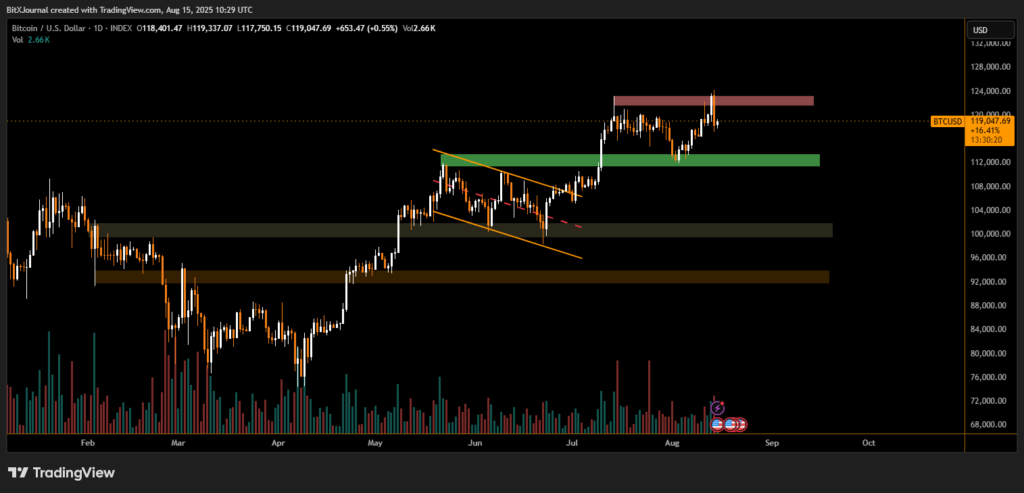Bitcoin (BTC) and MicroStrategy (MSTR) have emerged as the clear leaders in risk-adjusted performance this year, delivering Sharpe ratios above 2.0 — more than double the levels of most large-cap technology stocks. This comes as market volatility for both assets drops to multi-year lows, signaling a shift in the risk-reward landscape for digital assets.
Bitcoin’s Sharpe Ratio Surges Past Traditional Assets
According to market performance data, Bitcoin currently holds a Sharpe ratio of 2.15, the highest among major global assets. This metric, which measures return relative to volatility, underscores Bitcoin’s exceptional performance even as implied volatility has fallen to just 37%, its lowest point in nearly two years.

“This is a strong indicator of maturing market dynamics in the digital asset space,” According to BITX market strategist. “When volatility declines and returns remain strong, institutional adoption becomes more viable.”
MicroStrategy’s Leveraged Bitcoin Strategy Pays Off
MicroStrategy, known for its extensive Bitcoin holdings, follows closely with a Sharpe ratio of 2.00. While its implied volatility remains higher at 56% due to its leveraged exposure, it has dropped significantly from 140% in December 2024 and over 120% in April 2025.
Analysts point out that MSTR’s performance reflects a high-beta proxy for Bitcoin, making it an appealing option for investors seeking amplified exposure to BTC price movements with strong risk-adjusted returns.
In contrast, large-cap technology stocks — often seen as growth leaders — are clustered near Sharpe ratios of 1.0, highlighting the outperformance of Bitcoin and MicroStrategy on a risk-adjusted basis.
“This gap in Sharpe ratios is hard to ignore,” added another analyst. “It’s not just about raw returns anymore — it’s about efficiency of returns, and right now, Bitcoin is setting the benchmark.”
Disclaimer
This content is for informational purposes only and does not constitute financial, investment, or legal advice. Cryptocurrency trading involves risk and may result in financial loss.
